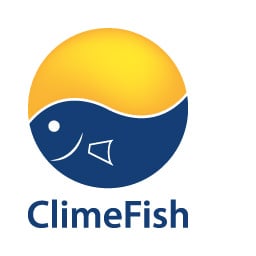Climate change and impacts on aquaculture
Climate changes affecting aquaculture are reflected by temperature changes in both water and air, particularly surface temperatures in marine conditions and other alterations in oceanographic conditions, including currents, wind speed and waves.
Extreme weather conditions – becoming more intense and more frequent – are important effects, either as storms causing material damage or flooding of freshwater farms. Fish or shellfish will be subject to different stresses and physiological effects, affecting growth and development, which may further increase their susceptibility to diseases and infections. Veterinarians are also concerned about new and emerging diseases and parasitic infection. Development work on selective breeding for more robust strains, for better temperature and disease resistance, is anticipated and already initiated.
Read more in the ClimeFish Virtual Fact Sheets:

One of the biggest challenges facing the future world aquaculture industry is the access to proteins, minerals and omega 3 fatty acids. More than 85% of t
he worlds fish stocks are already fully exploited, hence increasing the use of wild caught fish as ingredients in the aquaculture fish feed is no longer possible. 70% of the ingredients in the feed fed to Atlantic salmon have already replaced by plant sources. Climate changes could also reduce the agricultural production of soy, corn and other ingredients that today’s fish feeds rely upon, hence the industry has to search for new and sustainable resources to produce cultured fish, such as algae, in the future. The industry is in need of innovative solutions to solve this urgent challenge.
Infrastructure for marine farms will be another area for investigation, particularly given the pressure to develop ‘off-shore’ facilities for fish, closed systems and IMTA farming as well as species at lower trophic levels. However, lower trophic level speceis may be more affected by climate changes. Currently, there is evidence for the dependency on stable climate conditions for mussel settlement, growth rate and quality (meat yield). Climate changes may affect production through differences in nutrition, frequency and intensity of harmful algal bloom events while ocean acidification may reduce growth through reduced calcification of mussels in general. Thus, the technology for closed systems, more robust systems, systems for new species and new operating conditions for offshore farms raise new challenges and risks, while knock-on effects will be reflected in assuring worker safety and insurance rates. New technologies for distance management (with new ICT solutions and satellite monitoring) of farms are anticipated. A core challenge to aquaculture in this regard, comes from understanding and anticipating the effects of gradual change as opposed to extreme events.
Most of the farmed species in ponds in central Europe are warm water species and have their optimal thermal range between 24-30°C. It is expected that Hungarian aquaculture will benefit from increased temperatures in general through increased growth rates and a longer production period. However, the increased occurrence of extreme weather events may stress aquatic organisms, depreciate physical infrastructure. Prolonged high temperatures and drought cause severe evaporation in lakes and ponds. Altered precipitation patterns may further induce conflicts between fish farmers and operators of irrigation sector over the use of renewable freshwater resources.
Climefish will develop a strong engagement with fish and shellfish farmers through the development of a specific stakeholder hub, where aquaculture producers will provide their operational and technical experience to assist the development of the Decision Support Tools and the Decision Support Framework.
You can read more about the specific cases included by ClimeFish in the Aquaculture sector here:
C11A – North East Atlantic, includes species like Atlantic salmon and cod
C12A – Greece, includes species like sea bass and meagre
C13A – Spain, Iberian upwelling, includes species like blue mussel and carpet shell
C14A – Scotland, includes species like blue mussel, flat and cupped oyster
C15A – Italy, includes species like blue musel and carpet Shell

